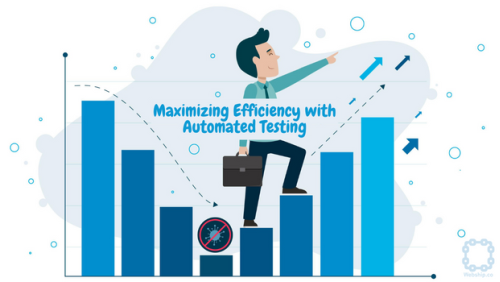In today's fast-paced software development environment, organizations strive to deliver quality products quickly and efficiently. One of the critical aspects of achieving this goal is automated testing. Automated testing is the process of using software tools to execute test cases and compare actual results with expected results. The aim of automated testing is to identify defects, errors, and bugs quickly, thereby reducing development time and costs.
Maximizing efficiency with automated testing involves creating a robust and scalable testing strategy that helps identify and address issues in the software development process. This article discusses the importance of automated testing and provides insights into how organizations can maximize efficiency with automated testing.
Why is Automated Testing Important?
Automated testing has become increasingly important in modern software development processes. Here are a few reasons why:
- Faster Testing: Automated testing allows organizations to execute a large number of test cases quickly, thereby reducing the testing time and time to market.
- Better Quality: Automated testing ensures consistency and accuracy in the testing process, leading to higher quality products and fewer defects.
- Reduced Cost: Automated testing saves time and money by identifying defects and errors earlier in the development process, reducing the cost of fixing issues.
- Scalability: Automated testing is scalable and can handle large test suites, making it ideal for complex software applications.
Maximizing Efficiency with Automated Testing
Here are some ways organizations can maximize efficiency with automated testing:
- Identify Test Scenarios: Before implementing automated testing, organizations must identify the test scenarios that need to be automated. This includes identifying critical functions, features, and workflows that need to be tested.
- Choose the Right Tools: The success of automated testing depends on selecting the right tools. Organizations must evaluate different tools and choose the one that best fits their requirements.
- Create Test Scripts: Once the test scenarios and tools have been identified, organizations must create test scripts that automate the testing process. Test scripts should be modular, reusable, and easy to maintain.
- Integrate with Continuous Integration/Continuous Delivery (CI/CD) Pipeline: Organizations should integrate automated testing into their CI/CD pipeline to ensure that each code change is thoroughly tested before being deployed to production.
- Monitor and Analyze Test Results: Organizations must monitor and analyze test results to identify defects and issues in the software development process continually. This helps in identifying and addressing issues quickly, reducing development time and costs.
- Maintain and Update Test Suite: Automated testing is not a one-time process. Organizations must maintain and update the test suite to ensure that it remains relevant and effective.
Conclusion
Automated testing is a critical component of modern software development processes. It helps organizations identify defects and issues early in the development process, reducing development time and costs. Maximizing efficiency with automated testing involves identifying test scenarios, choosing the right tools, creating test scripts, integrating with CI/CD pipeline, monitoring and analyzing test results, and maintaining and updating the test suite. By following these best practices, organizations can build a robust and scalable automated testing strategy that ensures quality and efficiency in their software development process.





